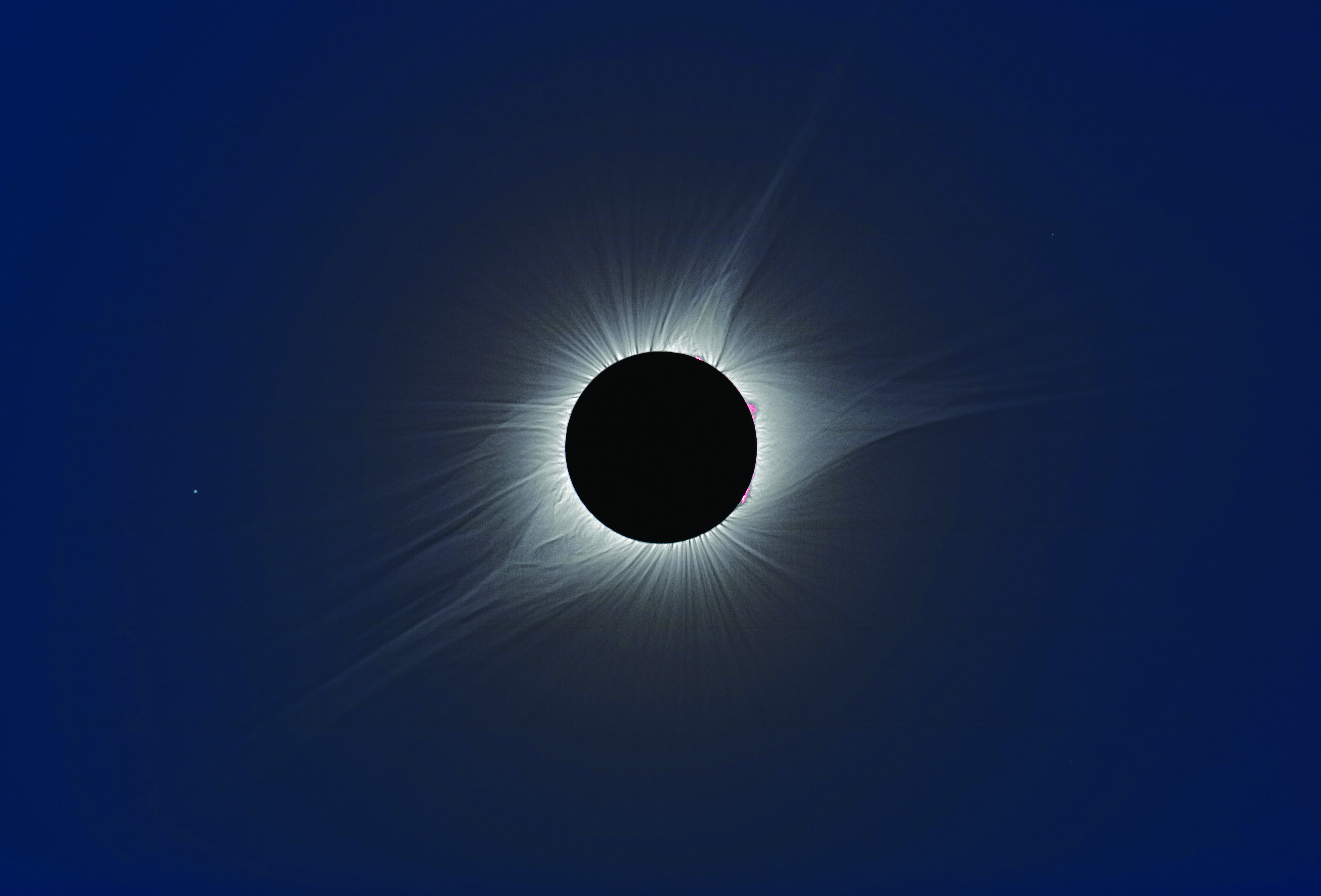Experience the April 2024 Total Solar Eclipse — And Share It With Others
Fall
2023
Get Involved
Experience the April 2024 Total Solar Eclipse — And Share It With Others
Tom Rice, Education and Mentoring Specialist, American Astronomical Society, and Assistant Research Professor of Physics, George Washington University
A solar eclipse occurs when the Moon gets exactly between the Earth and the Sun and blocks part of the Sun from view. A total solar eclipse is a rare experience: Any given spot on the surface of the Earth will see a total eclipse only once every 400 years, on average. That’s when the Moon is in perfect alignment to completely obscure the Sun—offering a spectacular viewing experience!
A total solar eclipse is coming to parts of North America on April 8, 2024, and much of the continent not in the path of totality will experience a partial solar eclipse that day. Here’s how you can experience the eclipse, share it with others, and be a citizen scientist during the event!
Experience the eclipse
For the best experience, you’ll want to get fully into the path of totality—a strip just over 100 miles wide that stretches from Mexico through Texas, the Great Lakes region, and finally, through Maine and eastern Canada. True totality is only experienced by those fully inside the path. If you are outside this path, even by a few meters, the disk of the Sun won’t be fully blocked, and you won’t be able to see the Sun’s spectacular corona—it’s worth the extra effort to get into the path of totality!
To see the Sun safely before and after totality, you’ll need a solar viewing filter, such as a pair of eclipse glasses. Be sure to get them from a reputable company, as not all glasses sold under these names meet safe standards (see eclipse.aas.org/resources/solar-filters for reliable vendors). During totality it is completely safe to view the Sun’s corona with your naked eyes. Enjoy the view!
Share the eclipse with others
A solar eclipse is a great excuse to engage public audiences in science appreciation and education. If you’d like to support local outreach efforts, here are some opportunities to consider:
- Get the 2023–24 Science Outreach Catalyst Kit (SOCK) for your SPS chapter! The kit contains eclipse-related physics and astronomy outreach activities for chapter outreach to K-12 students and the public. Learn more and request a free SOCK at spsnational.org/programs/outreach/science-outreach-catalyst-kits.
- The Astronomical Society of the Pacific (ASP) is seeking eclipse enthusiasts and undergraduate students who are off the path of totality to engage their local communities through their Eclipse Ambassadors Program, astrosociety.org/education-outreach/amateur-astronomers/eclipse-ambassadors/program.html.
- If you’re an educator or professional astronomer who is located on or near the path of totality, ASP invites you to become an ASP Eclipse Star, astrosociety.org/education-outreach/asp-eclipse-stars.
- Contact your local library and make sure they know about Solar Eclipse Activities for Libraries (SEAL). This project provides free solar viewing glasses and other resources to local libraries, starnetlibraries.org/about/our-projects/solar-eclipse-activities-libraries-seal/.
Contribute to citizen science during the eclipse
If you’d like to contribute to citizen science efforts during the eclipse, keep an eye on NASA’s eclipse website, solarsystem.nasa.gov/eclipses/home, where opportunities will be posted.
Learn More
Visit the American Astronomical Society's website all about solar eclipses. eclipse.aas.org

